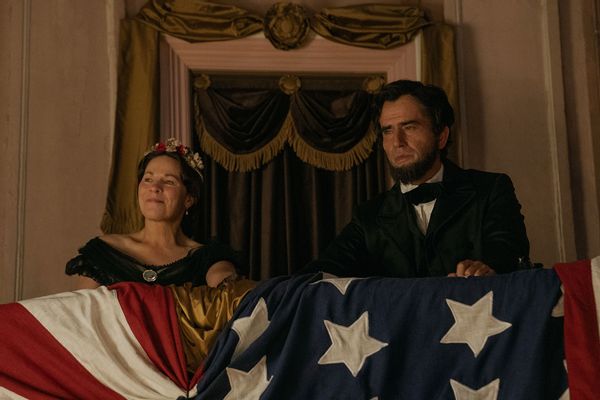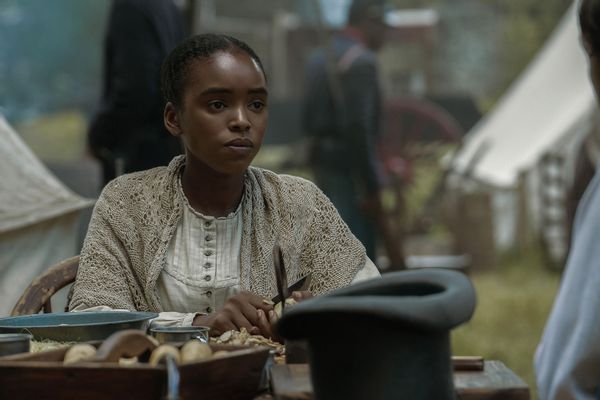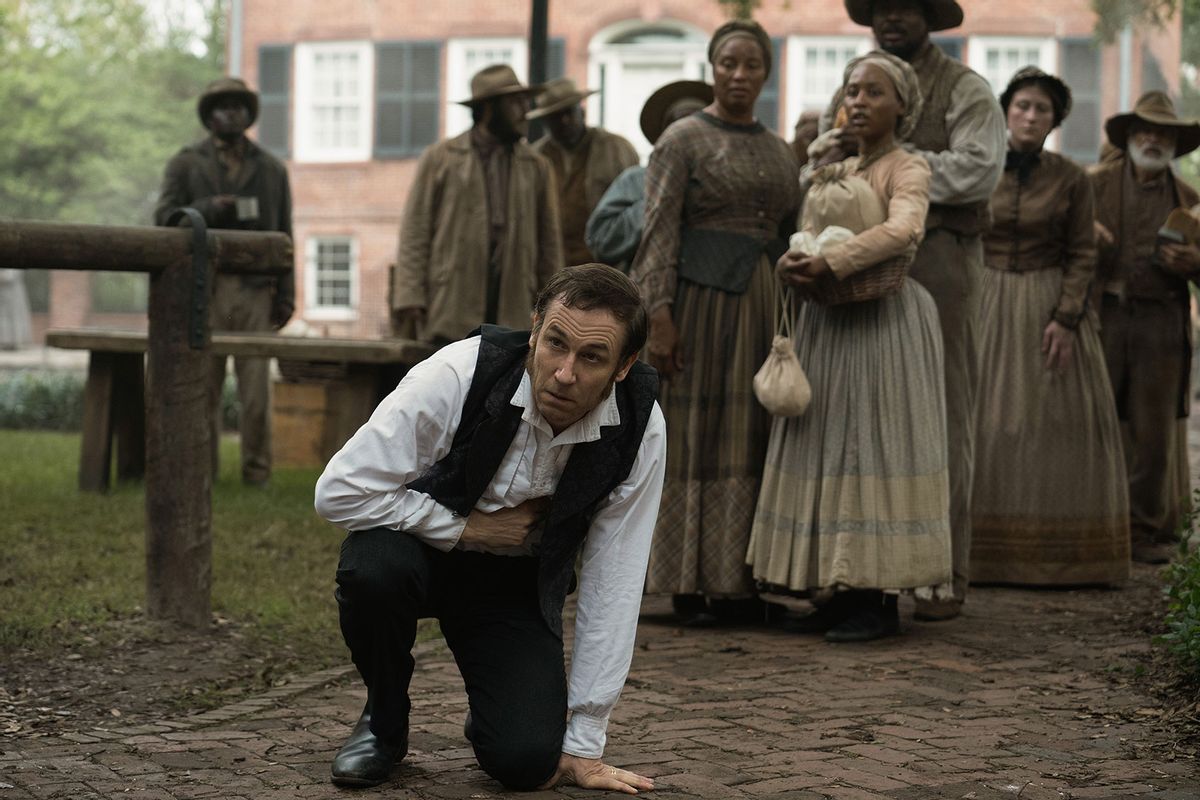While growing up, "Manhunt" creator Monica Beletsky wondered why the neighborhoods in her hometown of Philadelphia were so different from each other despite being so geographically close, as in no more than five- or 10-minutes' distance between them. Most big cities are quilted this way, with working class squares abutting middle- and upper-class areas.
"I think it's just something I always had in the back of my mind. 'Why is it like this?'" Beletsky asked in a recent Zoom interview. "I knew it couldn't be because of people's innate potential. It had to be something more structural."
ABC's landmark airing of "Roots" piqued that nagging feeling, too. A rerun that Beletsky watched when she was younger helped her begin to piece together how her father might walk differently through the world than either she or her mother did.
America's shared history is comprised of countless personal histories, with some puzzle pieces hidden or reshaped along the way. Some lost parts would remain forgotten if it were up to far too many people. Those require some rebuilding through fabrication along with the will to fill in the gaps left unquestioned in often told stories.
This was Beletsky's opportunity and challenge with "Manhunt," the Apple TV+ thriller exploring the search to bring John Wilkes Booth (Anthony Boyle) to justice after he assassinated Abraham Lincoln (Hamish Linklater).
Instead of recreating the nearly two-week cavalry chase meticulously described in James L. Swanson's bestseller, "Manhunt: The 12-Day Chase for Lincoln's Killer," Beletsky created an action thriller that cast Lincoln's Secretary of War Edwin Stanton (Tobias Menzies) as both the lead investigator and a man struggling to maintain his close friend's political legacy.
 Lili Taylor as Mary Todd Lincoln and Hamish Linklater as Abraham Lincoln in "Manhunt" (AppleTV+)Beletsky's work in TV, including "Friday Night Lights" and "Fargo," enabled her to see the potential in introducing voices to the story that aren't typically represented yet help explain the consequences of what she described as America's "Sliding Doors" moment.
Lili Taylor as Mary Todd Lincoln and Hamish Linklater as Abraham Lincoln in "Manhunt" (AppleTV+)Beletsky's work in TV, including "Friday Night Lights" and "Fargo," enabled her to see the potential in introducing voices to the story that aren't typically represented yet help explain the consequences of what she described as America's "Sliding Doors" moment.
"It's this huge 'what if' for our culture," she said. "If he had lived, what would our society be like today?"
"Manhunt" dispenses with the details of what most Americans learn as part of a basic history class, but here is a refresher nevertheless: Almost 159 years ago to this day, on April 14, 1865, Lincoln and his wife Mary attended a production of "Our American Cousin" at Ford's Theatre in Washington.
"It's this huge 'what if' for our culture. If he had lived, what would our society be like today?"
As the Lincolns watched the onstage action, Booth quietly snuck into their booth and shot the president in the back of the head. Lincoln died a few hours later. Booth escaped, setting off a 12-day pursuit that ended with him trapped inside a Virginia tobacco farmer's barn in Virginia, where he was fatally shot.
The drama's penultimate episode, "Useless," depicts that ending in tandem with a precipitous decline in Stanton's health as the stress of the hunt becomes too much for a man with chronic asthma to pit himself against. The hour's title is drawn from Booth's reported last words: "Useless, useless, useless," he is said to have mumbled while staring at his hands.
Building a narrative connection between that moment and Booth's motivation afforded Beletsky to compose a morality-defining monologue for Boyle to deliver, one which also captures his arrogance and smallness.
That much is to be expected from any historic dramatization. Beletsky, however, was acutely aware of how closely this point in American history is observed — and to no small extent mythologized and sanitized.
"I was looking to do something that went beyond what the show is on its surface."
"Manhunt" lingered in development hell for around 20 years before she took on the project. At one point, Harrison Ford was supposed to star in a movie adaptation of the book. From the start, Beletsky said, "I was looking to do something that went beyond what the show is on its surface."
First, she established what she wasn't going to do, which was to make Booth the protagonist. "I think that is what a lot of people tried before me," Beletsky observed, but she didn't want to glorify his white supremacy.
Reading further into history made Stanton a better choice as a hero. Beletsky realized that in the hours between the assassination and Johnson being sworn in the next day, the weight of everything fell on Stanton's shoulders, from establishing the investigation's logistics to protecting Lincoln's political mandate. "He was a de facto president for about 12 hours, and that really fascinated me as a dramatic situation," she said, along with the chance to treat a broadly known historic event as a pre-forensics crime thriller.
"This is a true crime take on American history, and I think that is what makes it accessible for a big studio to take on a project like this," Beletsky added. "I could bring an audience that wasn't just there to learn the history but is there because they like a murder mystery. They just happen to be seeing a show that takes place in the 19th century."
We need your help to stay independent
Most people know the high-level details about Lincoln's assassination. Beletsky, herself, admitted that she wasn't aware until she started working on the story that Confederate General Robert E. Lee surrendered five days before Booth assassinated Lincoln. "I thought of Lincoln as a two-term president, but the inauguration was like a month before the assassination," she said. "We basically lost his second term, and we lost the mandate that he had by winning the war."
"It was just a huge loss for our society and for our culture," Beletsky continued. "Part of what I wanted to look at and explore with the show is: How did that affect our democracy, and how did that affect our society and our culture today?"
"It wasn't like Black history was something that I had to work very hard to intertwine in the story. It's a part of American history, and it's a part of the story."
The answer is, in a word, Reconstruction — rather, the fact that Lincoln's death ensured it would fail before its full promise would be realized. But that wasn't a story Beletsky could easily sell to a studio; besides Henry Louis Gates, Jr. had already spearheaded a concise PBS documentary series a few years ago.
Instead, Beletsky worked backward from the trial transcripts of Booth's collaborators — another surprise for her, she said — and, in doing so, found testimony from free or former enslaved Black people that she used to create characters who could speak for them.
"There were about 10 witnesses for the prosecution in the trial who, until now, have really been left in the shadows," Beletsky recalled. "It was a thrill for me to find them. It wasn't like Black history was something that I had to work very hard to intertwine in the story. It's a part of American history, and it's a part of the story."
 Lovie Simone in "Manhunt" (Apple TV+)One major character in "Manhunt," Mary Simms (Lovie Simone), is based on a real person who once worked for Samuel Mudd (Matt Walsh), the physician who treated Booth's broken leg while he was on the run. Beletsky sustained critiques for presenting Mary as having been present when Booth was at Mudd's when, according to documented history, she hadn't worked for Mudd for some time.
Lovie Simone in "Manhunt" (Apple TV+)One major character in "Manhunt," Mary Simms (Lovie Simone), is based on a real person who once worked for Samuel Mudd (Matt Walsh), the physician who treated Booth's broken leg while he was on the run. Beletsky sustained critiques for presenting Mary as having been present when Booth was at Mudd's when, according to documented history, she hadn't worked for Mudd for some time.
That is the danger in dealing with a part of history that has "a lot of super fans who love a lot of attention to detail and have that detail memorized," Beletsky admitted. "But all the experts I've talked to are so excited about it because they understand what I'm doing isn't a Ken Burns documentary."
Besides, Beletsky pointed out, a pair of Black girls named Louise and Letty, who were around 11 and 13 years old, were working for Mudd at the time of Lincoln's assassination. Since they didn't testify at the trial, Beletsky employed dramatic license to fill in the blanks through Mary, through whom she also dramatized what it was like for a newly freed person to have received a land grant from the government, only to have the country's new president rescind it to pacify white southern landowners.
Want a daily wrap-up of all the news and commentary Salon has to offer? Subscribe to our morning newsletter, Crash Course.
"We know more about Booth's horse than we know about Mary Simms in the historic record," Beletsky observed. "So that sort of tells you everything right there."
She added: "That's kind of why it's hard to hear sometimes when some of the feedback on the show is 'Oh, I wish she had made it as a movie,' or 'I wish she had made it as one guy chasing another guy' . . . Because it feels like those people are saying, 'Well, we wish that you left these other people out.' And part of my whole point in telling this is that I think stories after the Civil War are few and far between."
New episodes of "Manhunt" stream Fridays on Apple TV+.



Shares